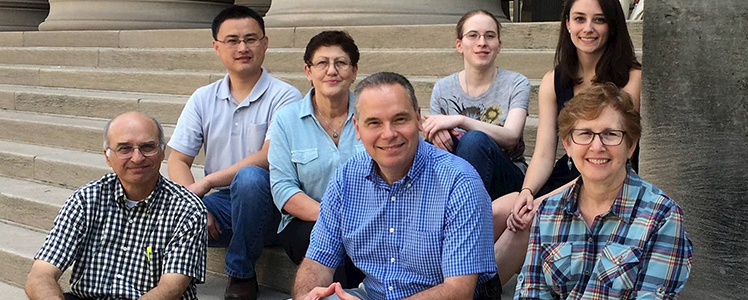Tuesday, July 26, 2016

Innovative Research Could Help Thwart Infections
Aaron Mitchell examines tiny cells from a fungus called Candida albicans, which is responsible for more than 400,000 deaths annually. Currently, there isn’t a way to prevent the deadly infection from starting, but Mitchell and his research team are working to change that through innovative gene disruption strategy.
Mitchell’s research takes place at his alma mater, Carnegie Mellon University, where he earned his undergraduate degree in biological sciences in 1977, and where he has been a professor in the biology department in CMU’s Mellon College of Science since 2008. Recently, he was named department head.
By forging relationships among his CMU colleagues, internationally across his field and with clinicians in his community, Mitchell has been able to use genetics as a new way to think about Candida.
The infection particularly thrives on implanted medical devices, which are used in millions of patients worldwide. In 2010, there were 332,000 hip replacements and 719,000 knee replacements in the U.S., and about 280,000 people worldwide receive heart valves each year.
“These things work terrifically well. If you have an arthritic knee and get it replaced you can do ballroom dancing for the next 20 years. The concern is that the presence of an implanted device carries an increased risk for microbial infection,” Mitchell said.
Microorganisms in the body find their way to the device and attach themselves, forming what is called a biofilm. While typically the body detects these organisms and kills them, they can exist undetected when attached to a device and grow to resist antibiotics.
To treat infected devices, the device almost always has to be removed.
“It’s very expensive and the quality of life, as least temporarily, is very poor. And sometimes you can’t put a device back in without it getting infected,” Mitchell said.
Which leads to a question Mitchell wanted to answer: How could he get rid of the biofilm without removing the device?
Research to fight Candida runs the gamut. One idea is to look for drugs that can kill the cells when they’re growing in a biofilm. Another is to infuse medical devices with antimicrobial agents prior to implantation.
Mitchell is taking a different approach. He’s focusing on the gene level to stop biofilms before they start.
“I’m in the business of trying to identify choke points in biofilm formation,” he said.
The medical community has taken note of Mitchell’s work.
Jack Edwards, chief of infectious diseases at Harbor/UCLA Medical Center and a professor of medicine at the David Geffen School of Medicine, said Mitchell has “transformed the field with his innovative molecular genetics strategies combined with an exceptionally talented way of teaching molecular genetics to biological scientists.”
Another medical professional impressed by Mitchell’s research is Cornelius Clancy, chief of infectious diseases for the Veterans Affairs Pittsburgh Healthcare System and a University of Pittsburgh medical professor. He regularly sees Candida infections in his hospital and puts in perspective the potential of Mitchell’s research, which could lead to new medical treatments within the next decade.
“The best drugs and the best strategies, at the end of the day, fundamentally are going to come from understanding how the bug lives in the host and causes diseases in the host. Understanding the basic molecular biology and understanding what Candida is doing in the host is crucial to developing a diagnosis. A lot of that work is being done by Aaron,” Clancy said.
By: Jennie Dorris
About Jennie Dorris
Jennie Dorris, based in Pittsburgh, is an award-winning interdisciplinary artist in writing and music. She is a regular contributor to Carnegie Mellon Today.
Footnotes
Caption: The Mitchell lab group with collaborator and colleague Dr. Fred Lanni. (L-R) Lanni, Dr. Wenjie Xu, Tatyana Aleynikova, Mitchell, Rachel Ehrlich, Katherine Lagree, Dr. Carol Woolford.